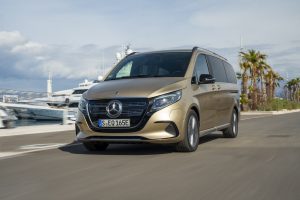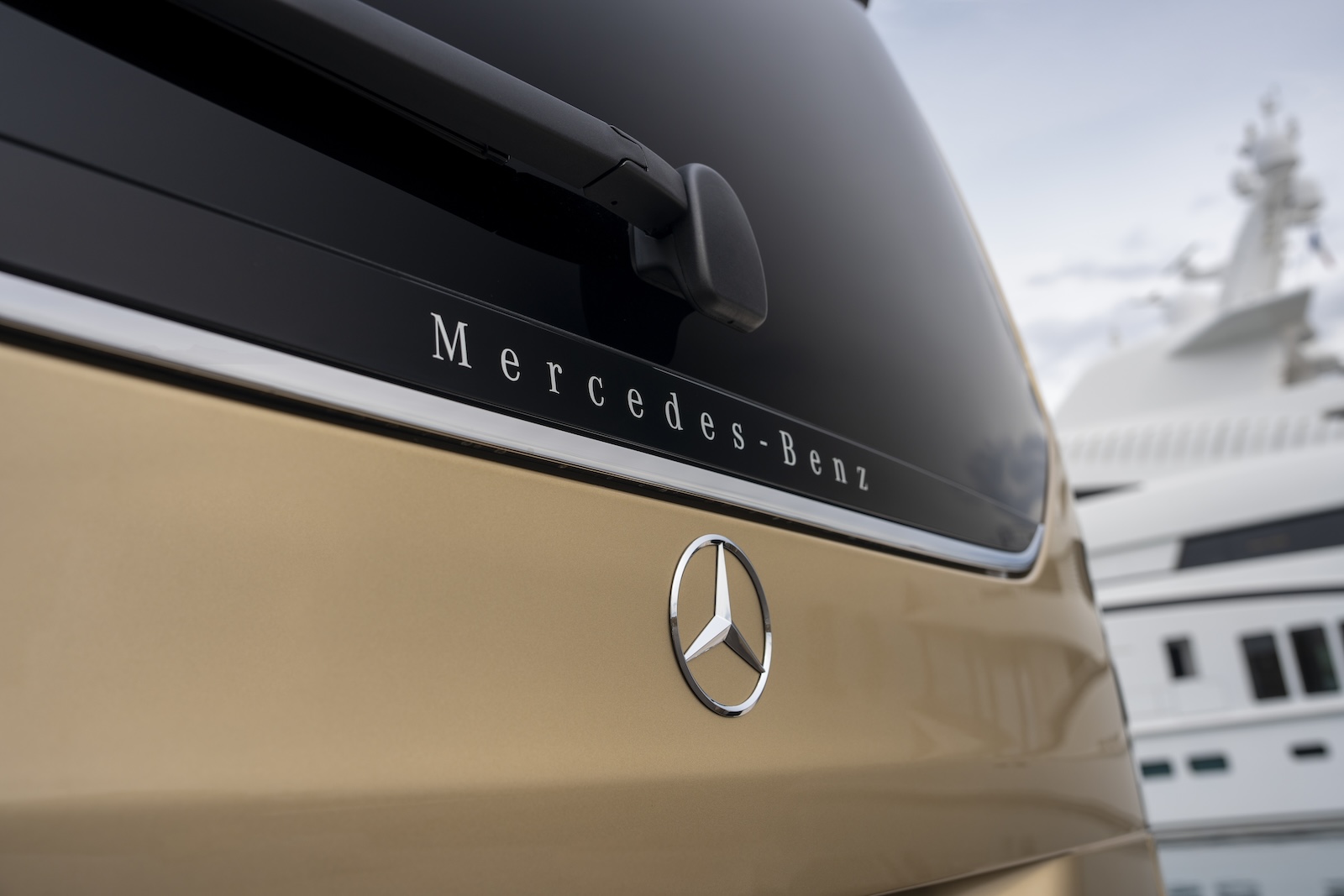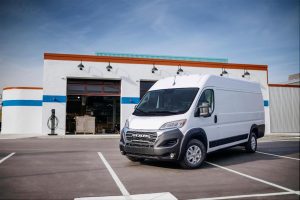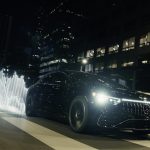Hybrids may be making all the buzz right now, but when it comes to the van market, battery-electrics continue to make noise. While the Ford Transit EV is the big seller, Mercedes-Benz is looking to continue gaining ground with its new midsize luxury entry coming to the U.S.

Mercedes Vans is looking to make further inroads into the U.S. market with its new all-electric EQV.
Mercedes showed off its new EQV and V-Class vans earlier this week. The new models are built on its Van Electric Architecture, or VAN.EA. The German automaker first showed off the new platform last May, excited about its promise not just in Europe but in the U.S.
That sentiment last didn’t find its way into the introduction of the new vans introduced March 5, although they’ve been on sale in Europe and Asia since the beginning of the year. Looking through the materials, there is no mention of their availability in the U.S.
However, the company’s Sprinter van has doubled its share of the van market in the U.S. during the last five years, it seems unlikely they’ll ignore their second-largest market behind Europe. Especially true since the company just killed the rear-wheel drive Metris van in the U.S. last year.
The Germans are coming … ?
While officials declined to talk about the American market during their formal introduction — later officially declining to discuss with industry publication Automotive News — they confirmed at the introduction of VAN.EA that it would be headed to the U.S. in 2026.
It’s widely expected that the private van, along with other electrified Mercedes vans, also will be produced at the company’s big plant outside Charleston, South Carolina.
“Of course, we’re looking at that,” said Mathias Geisen, head of Mercedes-Benz Vans, last May. Though he declined to confirm if — or when — that will happen, he made it clear that is the likely direction.
“We see a huge potential in the U.S. (van market) we can participate in,” he added. “The more vehicles we can get out of Charleston, the better that is.”
More Mercedes stories
- First Drive: 2024 Mercedes-Benz eSprinter
- Mercedes-Benz Slashes EV Forecast, Prepares to Enhance ICE Vehicle Lineup
- You and Your Mercedes-Benz Can Literally Make Beautiful Music Together
Not standing still
The Ford E-Transit is the bestselling electric van in the U.S. since it debuted in 2022. However, with more competitors coming, the company’s been looking for ways to make it better. This week, the company revealed it improved the range on the E-Transit to 159 miles with 89 kWh of usable energy. That’s a 26% range increase on its low-roof models and 32% on the high-roof vans.
And E-Transit with enhanced range maintains the same 266 hp and 317 lb.-ft. of torque as the prior model. The new model also charges faster, able to charge at a peak of 176 kilowatts. In 15 minutes on a DC fast charger, the van can add 67 miles of range. It can charge from 0% to 100% in 6 hours and 11 minutes using Ford Pro’s Series 2 80A charging station, which is 22% fast than than before. And like the Mustang Mach-E, it’s making the switch to the Tesla NACS charger.
Not only that, but it’s also partnering with Winnebago to develop battery-electric RVs, the latest iteration dubbed eRV2. The completely electric RV features a powertrain and house system powered by electricity. With 900 watts of solar capacity, the user can boondock — camp without any water, sewer or electric connection — for seven days.
Mercedes can compete in all markets
The VAN.EA platform comes in various configurations. The VAN.EA-P, according to a statement from Mercedes last May, “stands for privately positioned vans in the midsize segment with a new level of luxury. Whether for lifestyle-oriented customers with the highest standards, as a VIP shuttle, as a locally carbon-emissions free mobile office or for leisure-active families.”
A version of the new platform, referred to as VAN.EA-C, will be developed for commercial buyers and will be offered in midsize and large formats.
“With its modular and scalable design, the architecture is tailored for different configurations and upfitter solutions: From Courier, Express and Parcel delivery (Last-Mile Delivery) vehicles to ambulances or eGrocery vans, from municipal vans or box upfits to lifting platforms or recreational vehicles (RV), almost everything is conceivable,” the automaker explained last year.
The new midsize vans aren’t quite as powerful as the E-Transit, the EQV develops 204 hp, but it has a range between 172 miles to 226 miles, depending upon the setup. Those are on the WLTP scale so that range is more likely to come in between 150 miles and 200 miles using EPA-certified testing, which is closer to real-world performance.







0 Comments